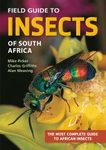About this book
Saproxylic Insects offers extensive information on insect life in dying and dead wood. Written and reviewed by leading experts from around the world, the twenty-five chapters included here provide the most global coverage possible and specifically address less-studied taxa and topics. An overarching goal of this work is to unite literature that has become fragmented along taxonomic and geographic lines. A particular effort was made to recognize the dominant roles that social insects (e.g., termites, ants and passalid beetles) play in saproxylic assemblages in many parts of the world without overlooking the non-social members of these communities.
Saproxylic Insects is divided into four parts:
- Part I “Diversity” includes chapters addressing the major orders of saproxylic insects (Coleoptera, Diptera, Hymenoptera, Hemiptera, Lepidoptera and Blattodea), broadly organized in decreasing order of estimated global saproxylic diversity. In addition to order-level treatments, some chapters in this part discuss groups of particular interest, including pollinators, hymenopteran parasitoids, ants, stag and passalid beetles, and wood-feeding termites.
- Part II “Ecology” discusses insect-fungal and insect-insect interactions, nutritional ecology, dispersal, seasonality, and vertical stratification.
- Part III “Conservation” focuses on the importance of primary forests for saproxylic insects, offers recommendations for conserving these organisms in managed forests, discusses the relationships between saproxylic insects and fire, and addresses the value of tree hollows and highly-decomposed wood for saproxylic insects. Utilization of non-native wood by saproxylic insects and the suitability of urban environments for these organisms are also covered.
- Lastly, Part IV “Methodological Advancements” highlights molecular tools for assessing saproxylic diversity.
Saproxylic Insects offers an accessible and insightful resource for natural historians of all kinds and will especially appeal to entomologists, ecologists, conservationists and foresters.
Contents
1. An introduction to the diversity, ecology and conservation of saproxylic insects. MD Ulyshen and J Sobotnik P
Part I: Diversity
2. General overview of saproxylic Coleoptera. ML Gimmel and ML Ferro
3. Ecology and conservation of Passalidae. MD Ulyshen
4. Diversity and ecology of stag beetles (Lucanidae). T-I Huang
5. Saproxylic Diptera. MD Ulyshen
6. Ecology, diversity and conservation of saproxylic hymenopteran parasitoids. J Hilszczanski
7. Saproxylic bees and wasps. P Bogusch and J Horak
8. Ants: Ecology and impacts in dead wood. JR King, RJ Warren II, DS Maynard and MA Bradford
9. Diversity and ecology of saproxylic Hemiptera. MM Gossner and C Damken
10. Diversity of saproxylic Lepidoptera. T Jaworski
11. Wood-feeding termites. DE Bignell
Part II. Ecology
12. Insect-fungus interactions in dead wood systems. T Birkemoe, RM Jacobsen, A Sverdrup-Thygeson, PHW Biedermann
13. Nutrient dynamics in decomposing dead wood in the context of wood eater requirements: The ecological stoichiometry of saproxylophagous insects. M Filipiak
14. Biotic interactions between saproxylic insect species. A Brin and C Bouget
15. Dispersal of saproxylic insects. H Feldhaar and B Schauer
16. Seasonality and stratification: Neotropical saproxylic beetles respond to a heat and moisture continuum with conservatism and plasticity. A Berkov
Part III. Conservation
17. Importance of primary forests for the conservation of saproxylic insects. T Lachat and J Muller
18. The importance of dead-wood amount for saproxylic insects and how it interacts with dead-wood diversity and other habitat factors. S Seibold and S Thorn
19. Conservation of saproxylic insect diversity under variable retention harvesting. S-I Lee, JR Spence and DW Langor
20. Saproxylic insects and fire. J Hjalten, M Dynesius, A-M Hekkala, A Karlsson-Tiselius, T Loefroth and R Mugerwa-Pettersson
21. Saproxylic insects in tree hollows. E Mico
22. It's the end of the wood as we know it: Insects in veteris (highly-decomposed) wood. ML Ferro
23. Utilization of non-native wood by saproxylic insects. MD Ulyshen, SM Pawson, M Branco, S Horn, ER Hoebeke and MM Gossner
24. The role of urban environments for saproxylic insects. J Horak
25. Molecular tools for assessing saproxylic insect diversity. RC Garrick and C Bouget
Customer Reviews




































